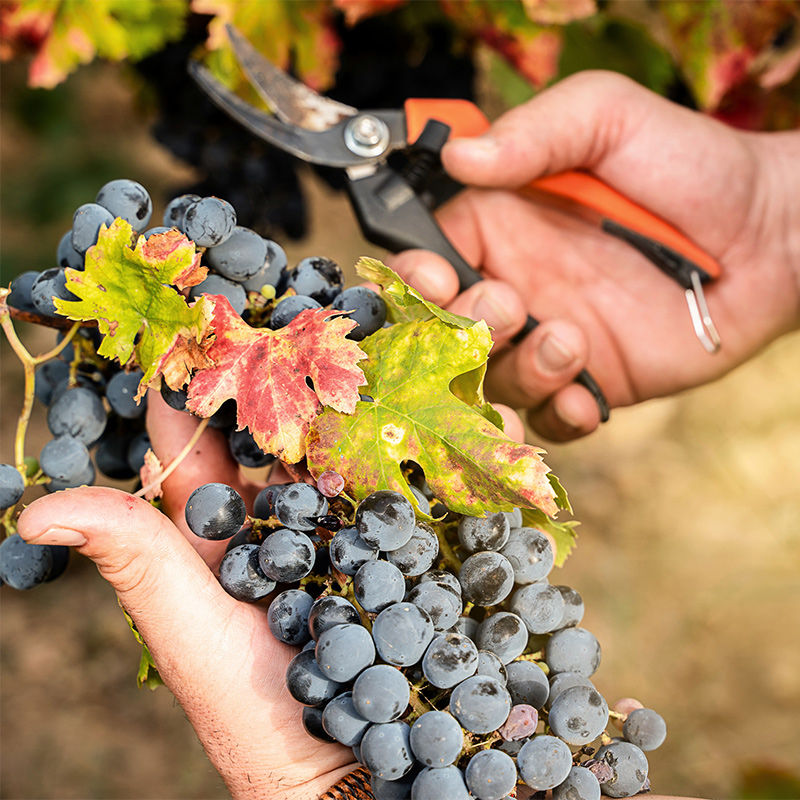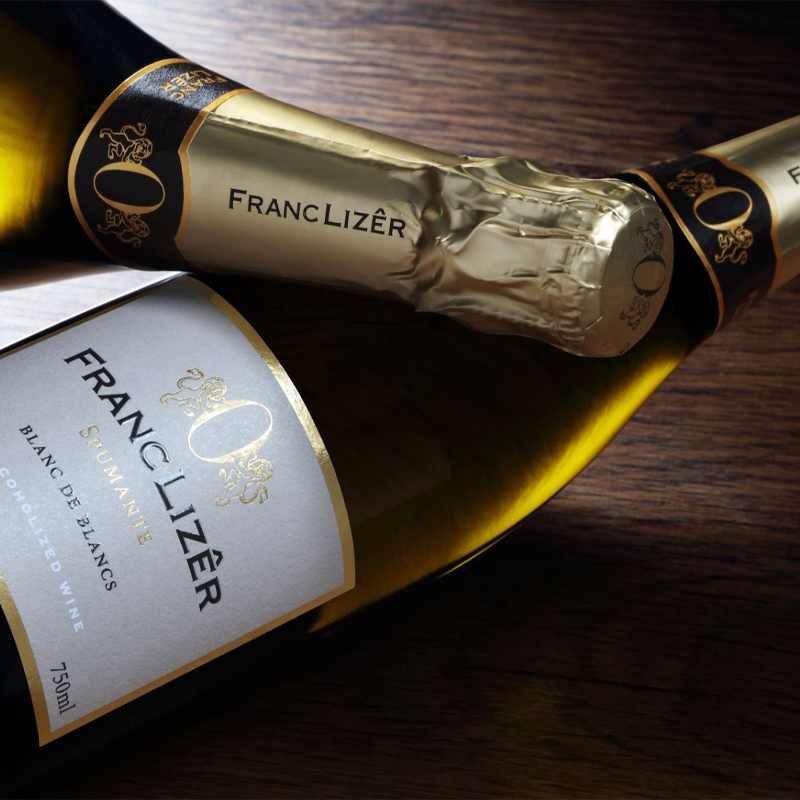The 2023 vintage can be considered one of the most atypical, difficult and ‘forgettable’ of the last century. After years, we have lost the lead in world wine production, leaving the title once again to France (estimated 45 million hectolitres); Spain is still on the third step of the podium with 36 million (-12%). This was a very challenging harvest year, in which there was no shortage of Peronospera, major reductions in the overall quantity and adverse and complicated weather conditions due to climate change. What has undoubtedly emerged in this harvest year is the vital role of the agronomist within the vineyards, to counter all these problems that will be increasingly on the agenda in the coming years. For 2023, the total production was 44 million hectolitres, for an overall drop of -12% compared to 2022, and 1.5 million people were employed. The situation is very varied in Italy: positive and even growing trends in the North, negative trends in Central Italy and dramatic in the South, where even -40% in production has been reached.
Tenuta San Leonardo – Trentino Alto Adige
The harvest began on September 19 with Merlot, followed by Cabernet Sauvignon and finally Carmenere in mid-October. The harvest was very good in terms of quality while in terms of quantity there was a rather important drop, between 20% and 30% on the red grapes and a 10% drop on the white grapes due to Downy mildew. However, the winery expects some really interesting wines: September favored a splendid ripening of the grapes, which are giving truly magnificent colors and aromas to the fermenting musts.
Lea Winery – Friuli Venezia Giulia
Lea Winery’s vineyards were fortunately only partially affected by the bad weather and the great heat of the second half of August provided a restorative action. Anyway, it can face the challenges of extreme weather conditions thanks to its drip irrigation system, organic farming, and an overall sustainable production concept. Lea’s experienced team started harvesting Pinot Grigio at the beginning of September and continued in the following weeks with the other white grape varieties (Ribolla Gialla, Glera, Traminer, Chardonnay…). Immediately after collection, the grapes were processed on three separate production lines, using one crusher-destemmer and two different horizontal pneumatic wine presses, in order to avoid oxidative phenomena, early and unwanted fermentation, volatilization of aromas that would otherwise compromise the quality of the wine. Despite the weather conditions of this summer, the winery has great expectations for this vintage’s orange wines: although the production yield has been lower, the quality is always excellent.
Serre – Veneto
The harvest began in mid-September, later than in previous years, due to moderate temperatures during the summer period. These allowed, however, for grapes with good acidity. Despite the bad weather phenomena that have characterized the areas in the last period, the winery still has very good expectations for its wines. The harvest began with the selection of the most suitable vineyard for the production of 58, a reference of great importance for the winery and with the most particular production process. It continued, then, with the cutting of the head to fruit.
Santa Lucia – Franciacorta
The Santa Lucia harvest began in mid-August and ended on the 2nd of September. Despite the adverse weather events of early summer – floods and hailstorms – the grapes are of excellent quality and healthy, with good acidity and flavor profile. Excellent harvest in terms of quantity as well. The winery will see the results on the wines, but it is expected to be an exceptional vintage, even for the Millesimato and Riserva wines.
Pratello – Lombardy
In 2023 the weather was not magnanimous and extreme weather conditions affected Pratello and consequently damaged some vineyards. The harvest began on the 30th of August, a few weeks later than in previous years due to continuous rains in the previous months that did not facilitate the ripening of the grapes. September’s warm and dry weather allowed the grapes to stay on the vine longer and reach a good level of ripeness. The Valtenesi area, thanks to the skill of Nathan, Nicolò and the other guys in the campaign, brought good results despite the weather difficulties. Very good red wines are expected, thanks to the September weather, and also a good Lugana, although production will be slightly lower than in previous years.
Vallebelbo – Piedmont
The 2023 harvest was certainly a poorer vintage in terms of quantity; an expected drop, considering the long period of drought that affected the area. From a qualitative point of view, on the other hand, 2023 is a prestigious year: wines of excellent quality are expected to be produced. The harvest began with Pinot Noir and Chardonnay, followed by Moscato Bianco, Dolcetto and Barbera; these are the main grape varieties used by the winery to produce its wines. Harvest ended in mid-September.
La Madonnina – Tuscany
The 2023 harvest for La Madonnina was a year to remember; the results were exceptional in terms of both quality and quantity. The grape harvest began around mid-September and ended around mid-October; the forecasts are very good. In the highest and least sun-exposed areas, where the youngest vines are located, the harvest has been exceptional; while in the most vocated and fertile areas, where the oldest and most historic vines are grown, the grapes will be used to produce wines to remember.
Santavenere – Tuscany
The 2023 harvest for Santavenere began with Chardonnay in late September, continued with Merlot, and ended these days with Sangiovese. Despite the climatic difficulties, the harvest quality and quantities are good. Therefore, it promises to be a wine with excellent freshness and a really important aging potential.
Cantine del Notaio – Basilicata
The harvest began in September with white grape varieties and continued with Aglianico del Vulture in mid-October. Due to the drought, the winery suffered a loss of about 40% in terms of quantity; rather high temperatures were recorded throughout the harvest period. In spite of this, the grapes are of very high quality; therefore, exceptional wines are expected.
Mottura – Apulia
The heavy and continuous rainfall that characterized the spring resulted in pathogenic diseases in the vineyard, starting with downy mildew. This resulted in an average drop in production of about 30%. However, the damage was contained from a quality point of view with careful scientific management of the vineyard. For some years, in fact, Mottura has been resorting to precision viticulture through field technologies that can monitor the microclimate of the vineyards and thus predict, based on climatic conditions, pathogen attacks.
Sibiliana – Sicily
For Sibiliana, but in Sicily in general, the 2023 harvest was rather unusual compared to other vintages, the extreme weather conditions encountered this year altered the normal growth and ripening of the grapes. The 2023 was a great challenge for the Sicilian winegrowers to maintain a vineyard in healthy conditions, but thanks to careful dedication and hard work, they managed to obtain good fruit. The grape harvest of the winery’s winegrowing members began during the last week of July, and the first grapes to be picked were Pinot Grigio and Grillo. The harvest was not the same as in previous years in terms of quantity, however, the long ripening period has resulted in the right balance between sugar and acidity.
Palmento Costanzo – Sicily
Palmento Costanzo’s vineyards were affected by Peronospera and heavy rains in May. As a result, the winery lost about 30% of its production compared to other years; nevertheless, it suffered less damage than other wineries due to its optimal location. The harvest began in late August with Nerello Mascalese for the sparkling wine bases, continued with the other white and red varieties, and ended a few weeks earlier than in other years. The grapes are of good quality, so interesting wines are on the horizon.



